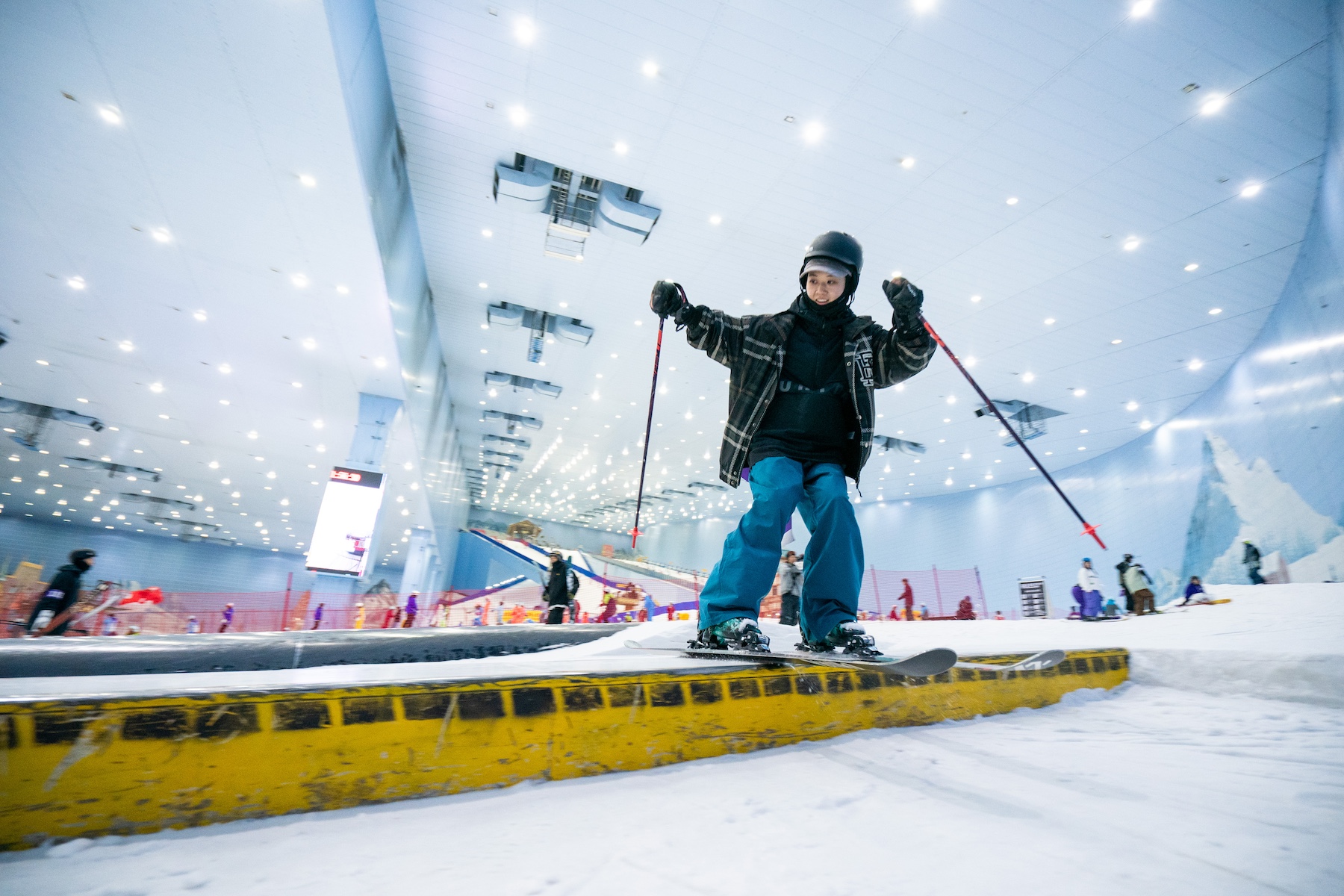Guangzhou is located in the southeast of China. Close to Hong Kong and Macau, the city is more associated with the sea than with snowy mountains. On the outskirts of Guangzhou, there is one of the world's largest indoor ski resorts. This time, Simon Fujita, the principal of Kandatsu Free Ski School, was invited to work as a coach at the ski school over there. Let's introduce that report.
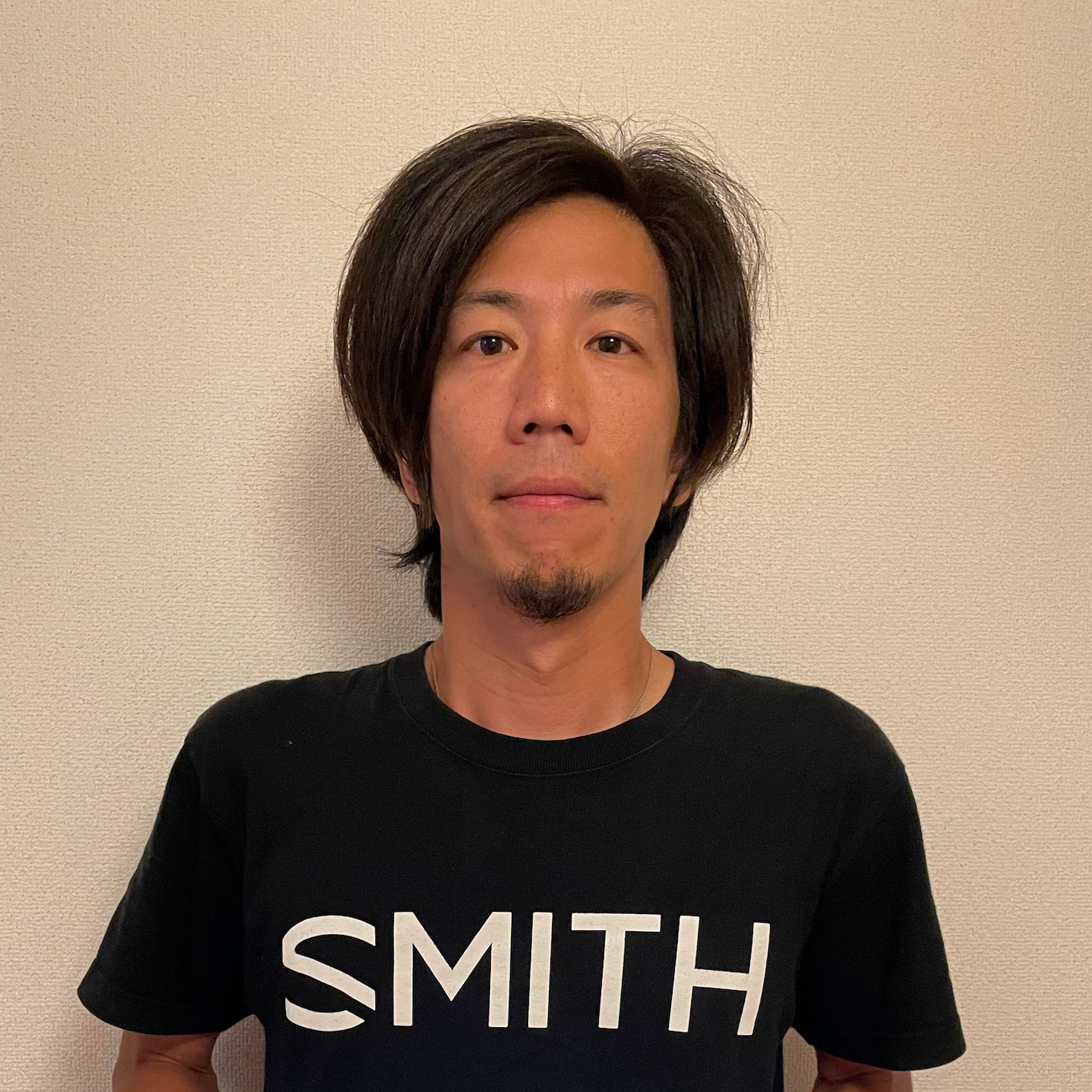
Simon Fujita
Principal of Kandatsu Freeski School. Over 20 years of coaching experience. He provides systematic and easy-to-understand lessons that are fun to teach for beginners to advanced students. He also actively skates and aims to become an ``old man who can move.''
Instagram: kandatsufreeski
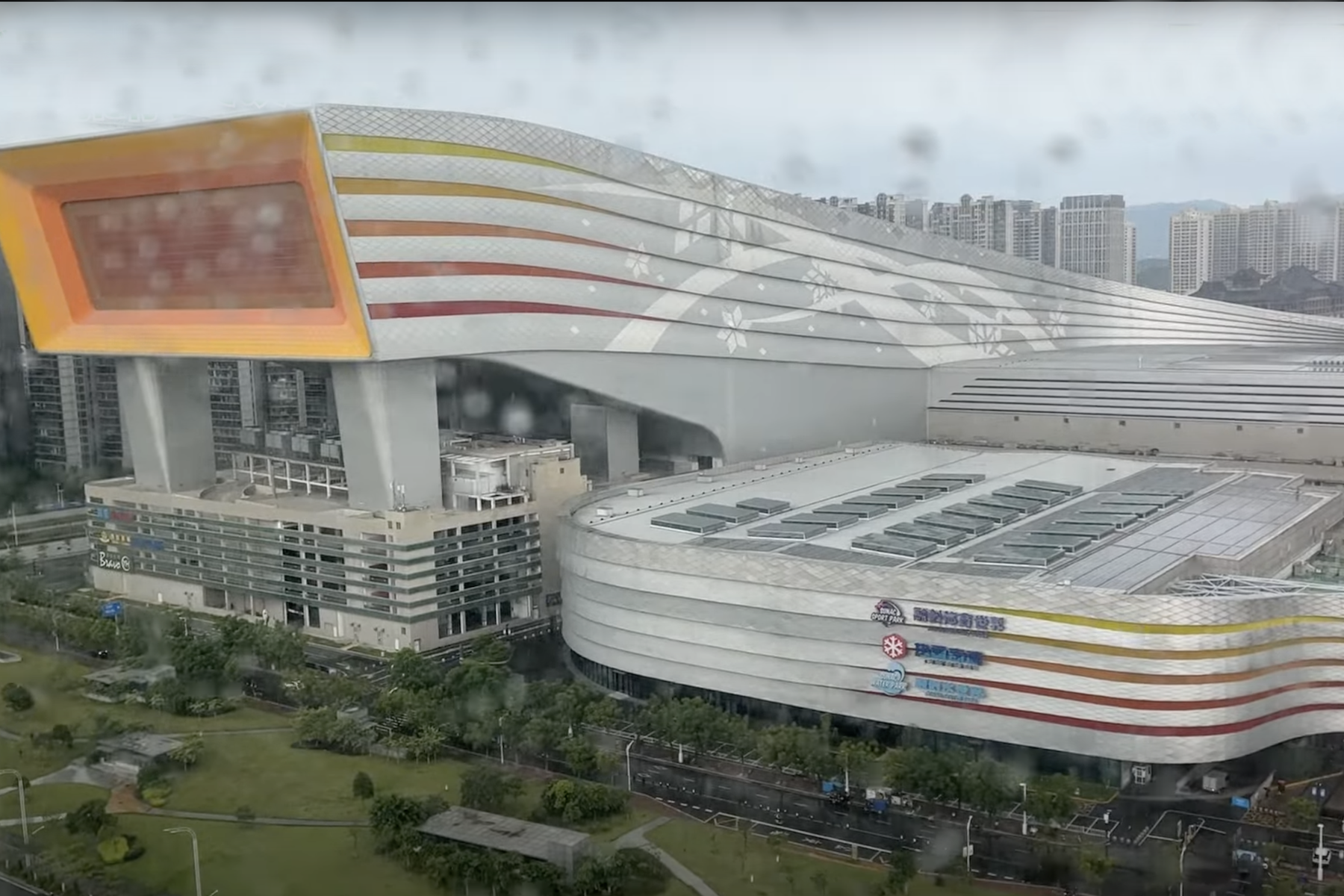
Huge facility with huge investment
China has implemented a policy to significantly increase the number of skiers and snowboarders in the country in preparation for the Beijing Olympics, and the sport is now popular among young people. This summer, I received an offer from a local person to teach freeskiing, which is currently gaining popularity in China. We headed to an indoor ski resort called Guangzhou Yuso Snow World on the outskirts of Guangzhou. Before I went, I had the impression that it was similar to Zaus, which once existed in Japan, but everything was beyond my imagination.
As is known from daily reporting, China is a surveillance society with surveillance cameras installed everywhere in cities.
The IT technology that supports this is also developing. We Japanese have a bad impression of a surveillance society, but the locals say that because there are surveillance cameras, even if something is stolen, the culprit can be found immediately, and that surveillance cameras act as a deterrent and prevent crime. It seems that the amount has decreased significantly and life has become much easier. Also, most of my shopping is done by code payment, so I don't use cash. Actually, the store doesn't accept cash. Credit cards cannot be used once you step out of the airport. Other than that, when you're in a car, thanks to IT, the navigation system will tell you how many seconds after a red light will turn green. I was shocked by this.
And surprisingly, this ski resort distributes IC tickets to foreigners, but basically Chinese people do not have lift tickets. Instead, you use facial recognition to board the lift. It is a system that links the ticket with the face photo registered in the individual's My Number. There is a camera at the lift platform, and the gate will open when you are authenticated.
This prevents fraudulent activities such as resale. I have skied at ski resorts all over the world, but this was my first experience with facial recognition for tickets. I also travel to ski resorts around the world for work, and my impression is that China is by far the most advanced in technology compared to Europe and America.
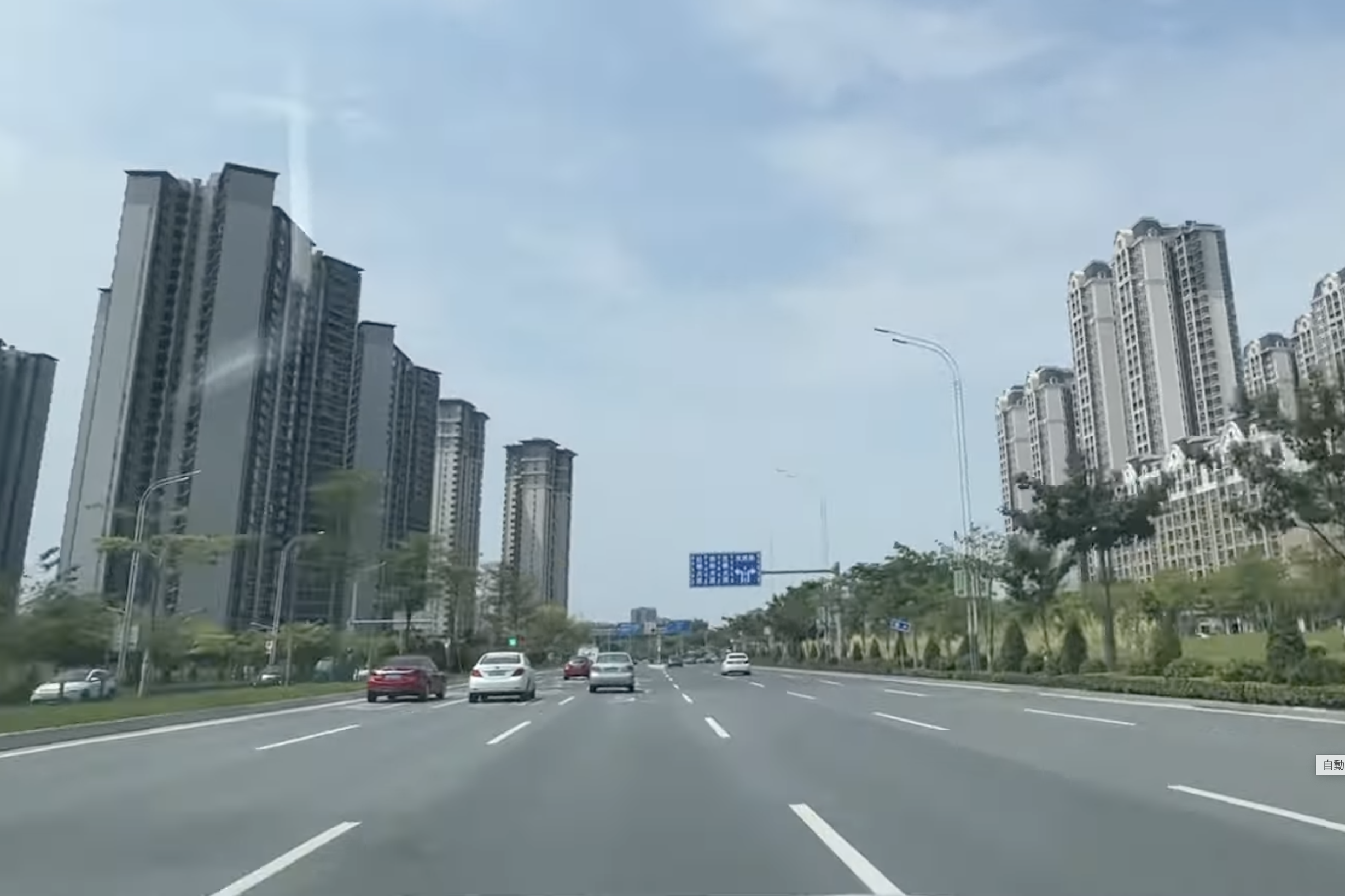
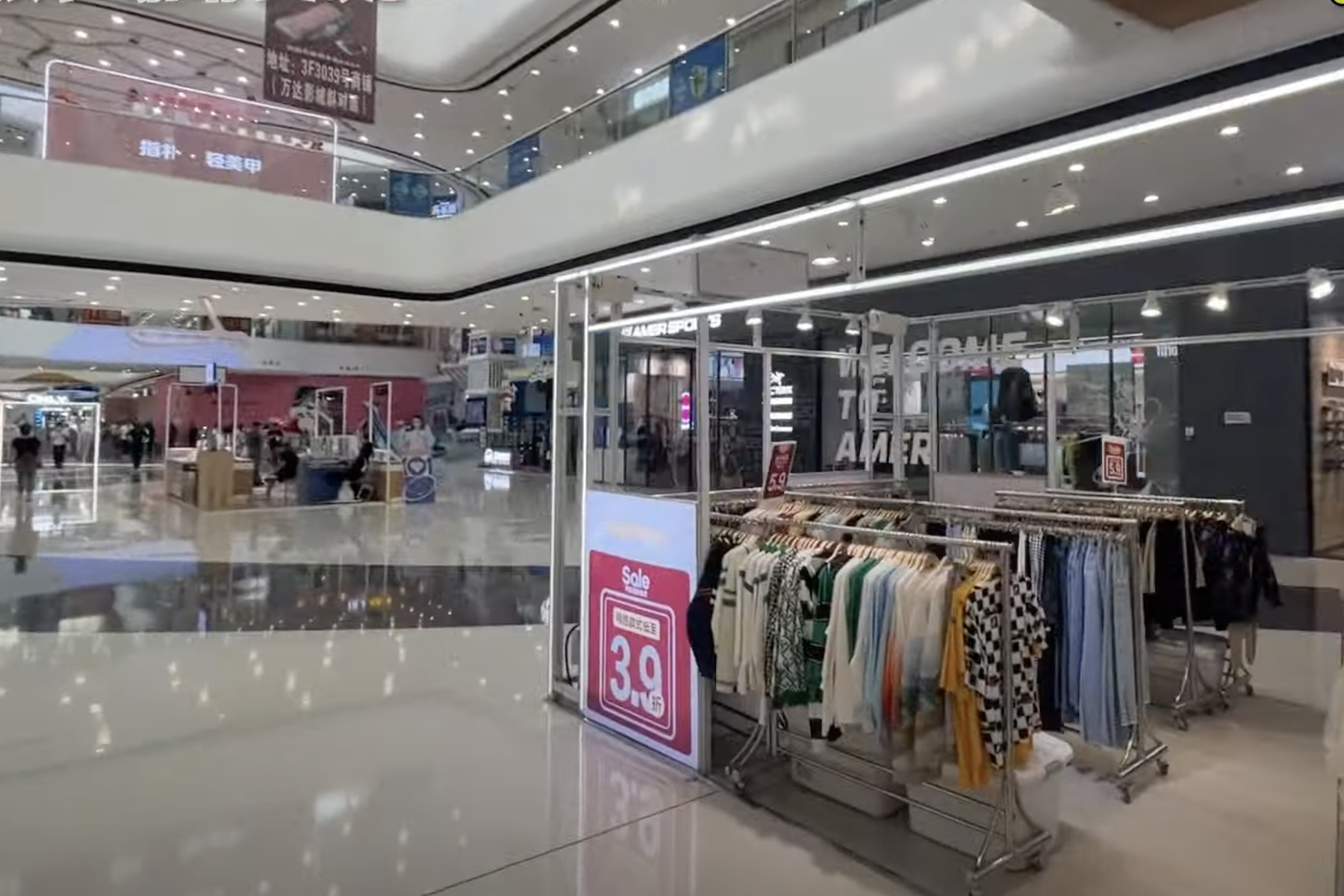
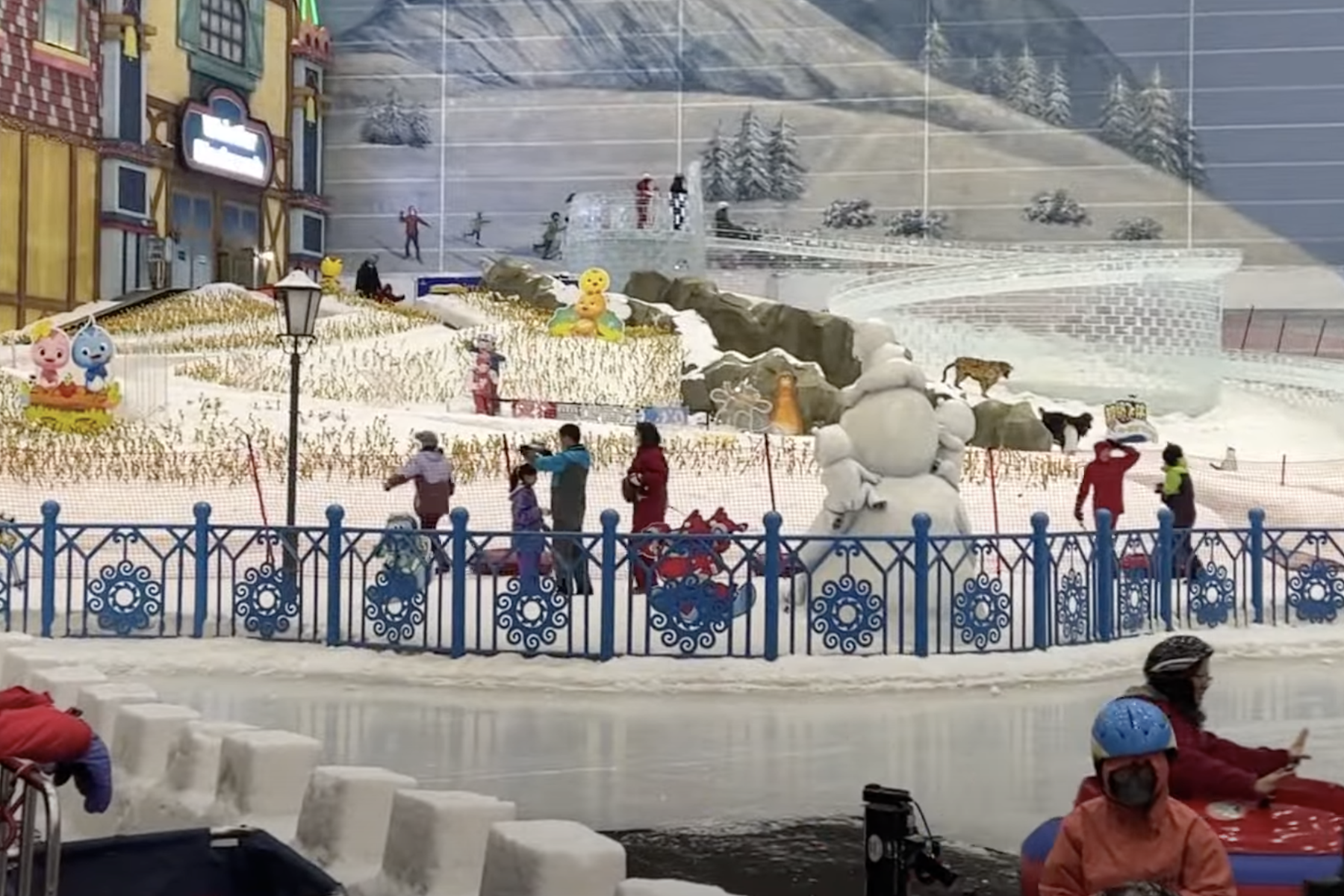
Now, as for the actual ski slopes, the snow quality is smooth and dry, similar to New Zealand. There are 3 courses: gentle, medium, and steep. And there are two parks. The park has multiple cylinder rails and two wide boxes. There is one wave jump and three kickers of about 5m. It's more than enough for an indoor ski resort. Apparently there are four other huge indoor ski resorts in China, and Guangzhou Yushu World Park is relatively small. A little further north, Chengdu's indoor ski resort parks seem to be even more extensive.
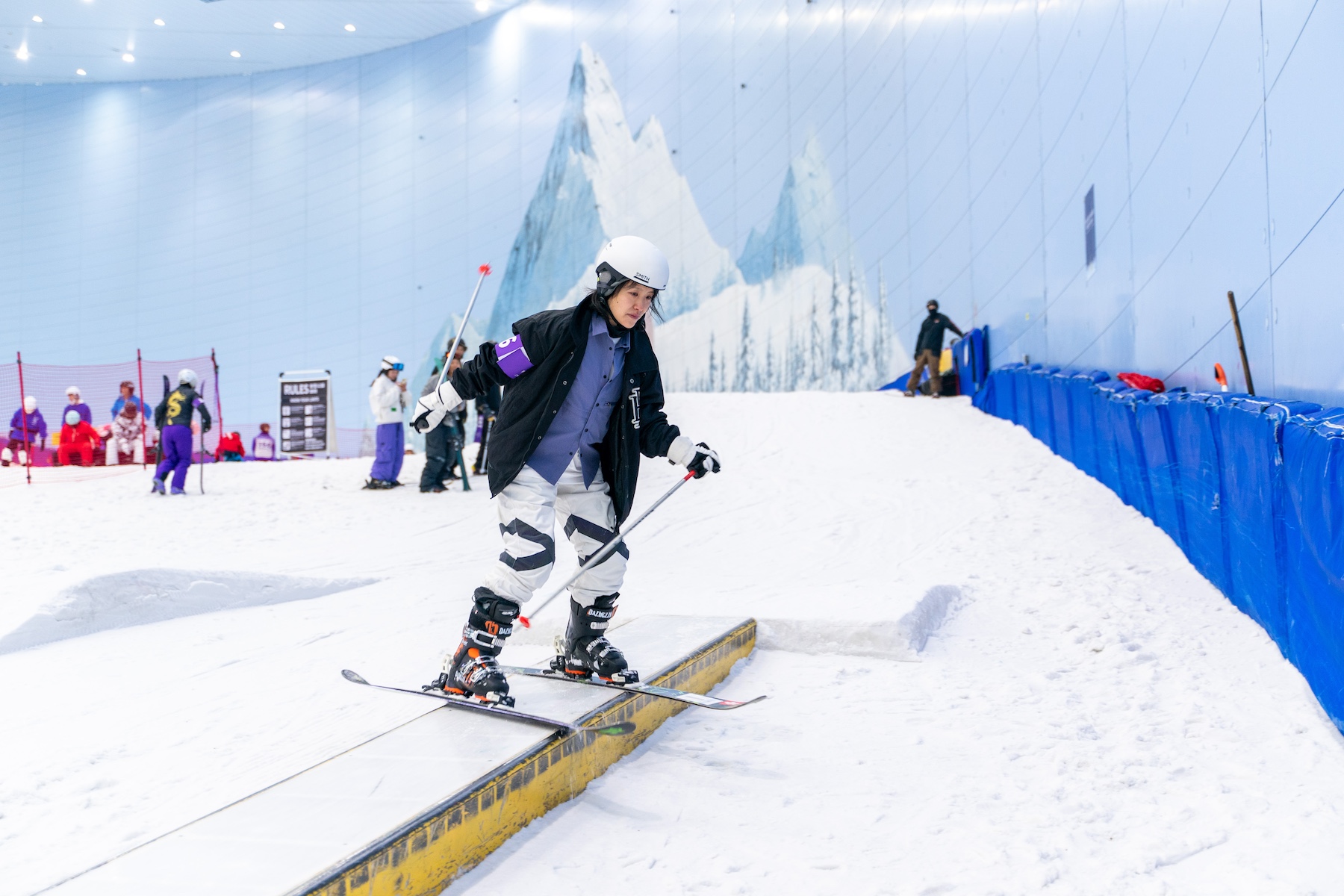
The distance of each course is around 450m. For advanced skiers, it feels like it's going to take a while, but it's still quite large compared to other indoor ski resorts, and it feels like a real ski slope. This is long enough that I'm satisfied with it. And surprisingly, even though it was indoors, there was a lift for two people. Take this lift to access the advanced course. A snow escalator is installed on the beginner course.

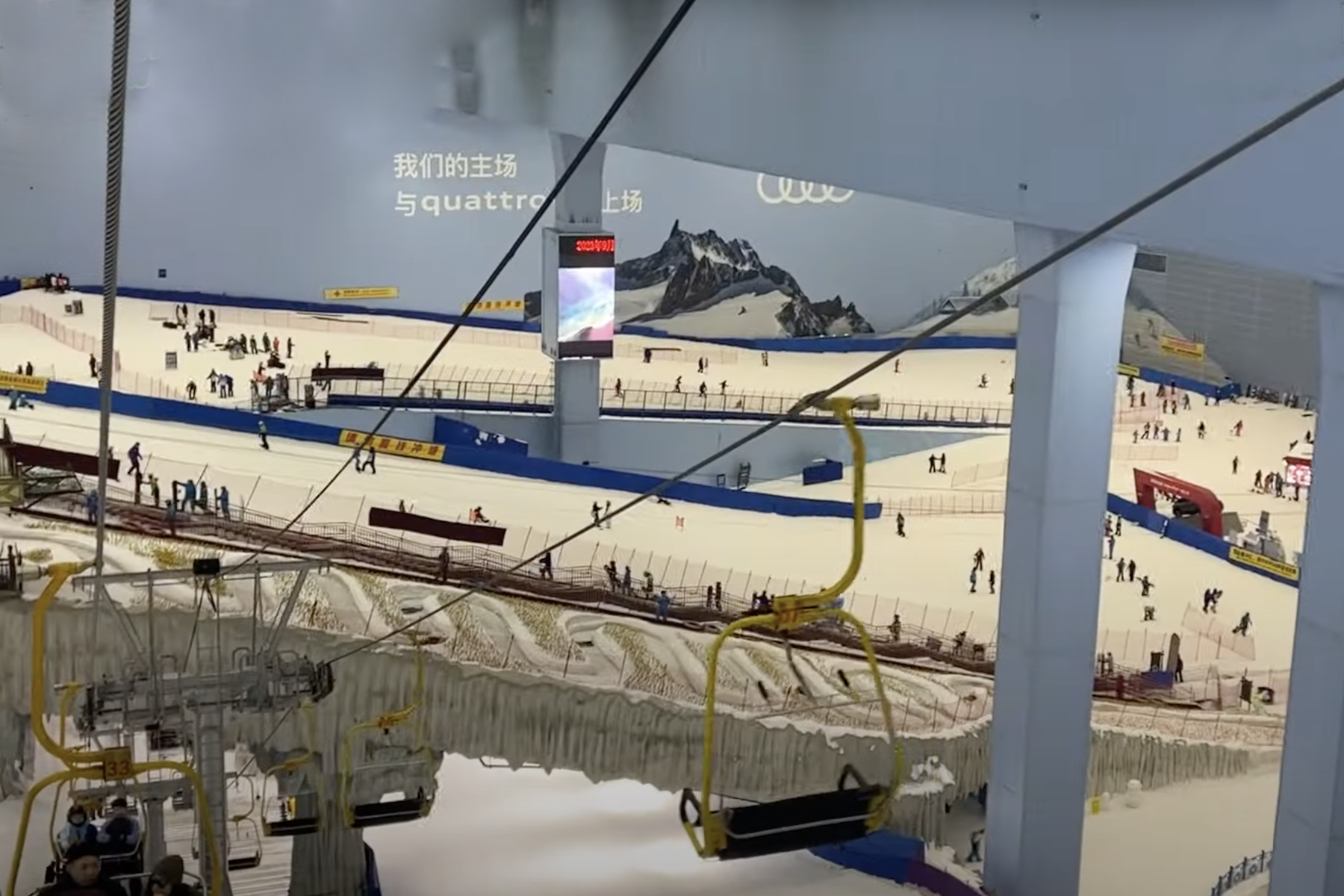
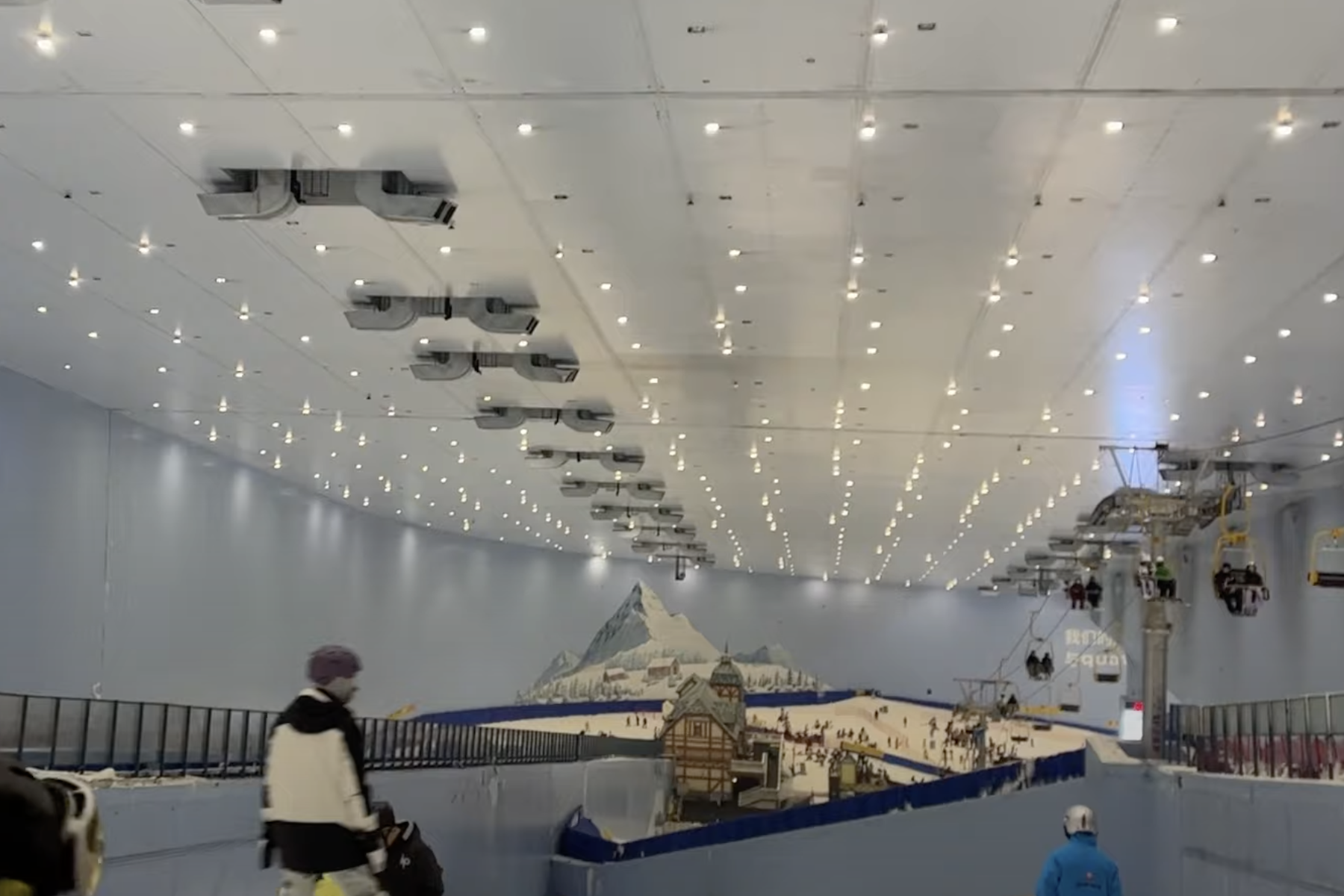
Snow actually falls from above. It comes down from multiple ducts installed in the ceiling, just like a real ski resort. If you keep skating on the same snow, dirt will gradually accumulate and it will become harder to slide on, so once every few months I completely reset all the snow indoors. I have to say that in addition to the scale of the facility, the financial strength is amazing.
Users are mainly young people. Freeskiing is also popular with girls
It's fairly crowded with customers on weekdays, and extremely crowded on holidays. As for the level of skiing, there are actually very few people who ride the ski lifts. In other words, most of our customers are beginners. And young people. There were probably only people under the age of 30. I may have been the oldest person on the slopes. The culture of skiing is new to China and seems to be starting mainly among young people. It felt somehow similar to the early days of Japan.
Many are beginners, but there are also many who no longer ski or snowboard. There were multiple attractions such as a tree adventure and tubing inside the venue, making it feel like a theme park. Therefore, although it is not slippery, it is also used by couples and families who come to play.
The percentage was higher among snowboarders.
However, what is different from Japan is that there seem to be many people who ski and snowboard. As a Japanese person, it's a little surprising to me that so many young people come here, bringing their own gear, skis and snowboards, and buying lift tickets for around 10,000 yen a day. You might think that most of the children come from wealthy families, but many of the people who have taken my lessons have gone on to become presidents of companies at a young age, and have achieved financial success by working hard on their own. There seem to be a lot of young people.
If there are many beginners on the slopes, there are still fewer people skiing in the park. However, in the lesson I took this time, about 70% were women. There are definitely more female skiers skiing the park than in Japan. This is probably due to the influence of Irene Gu, a member of the Chinese national team who was very successful at the Beijing Olympics. That's why the skis I wore were one of the best from FACTION.
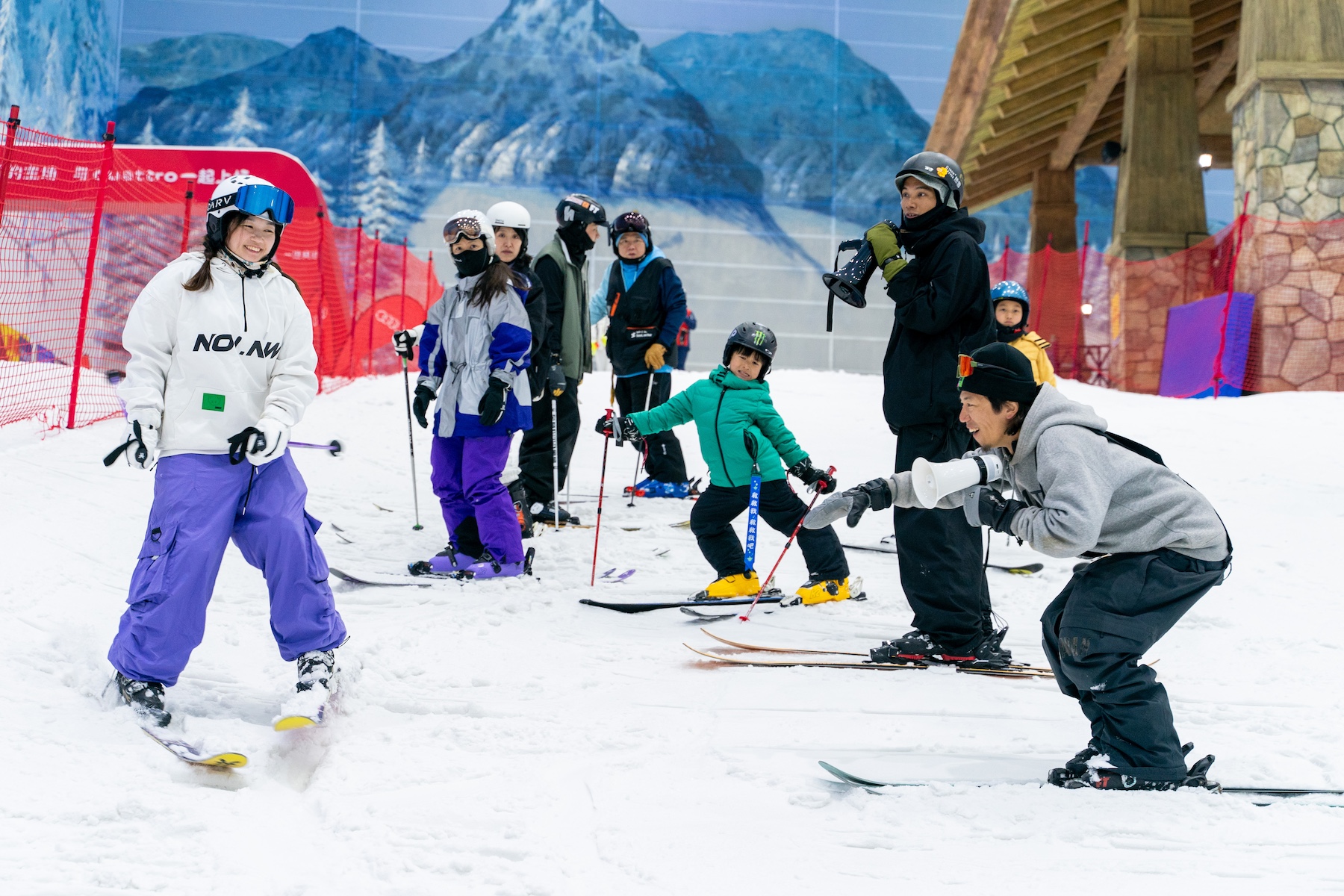
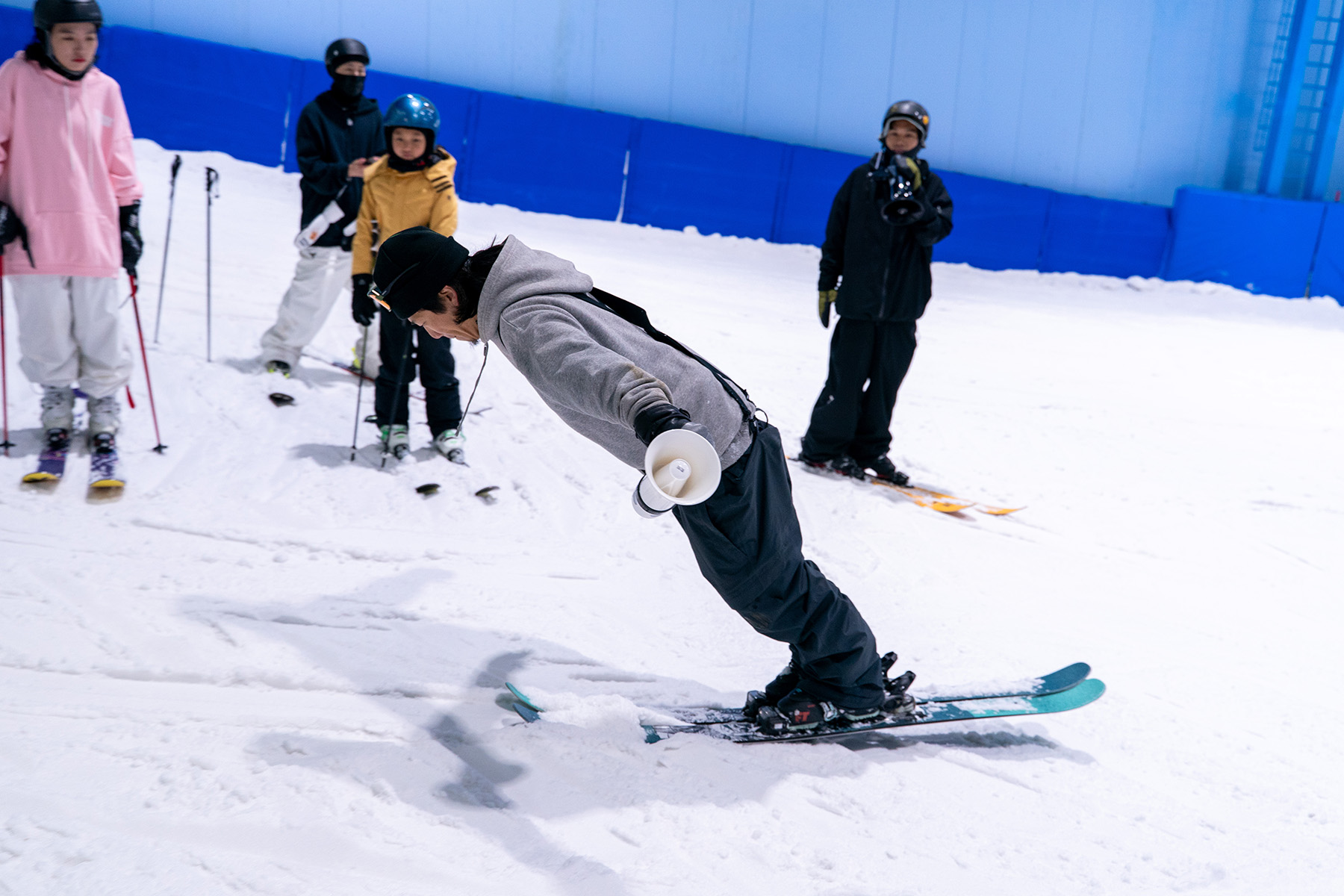
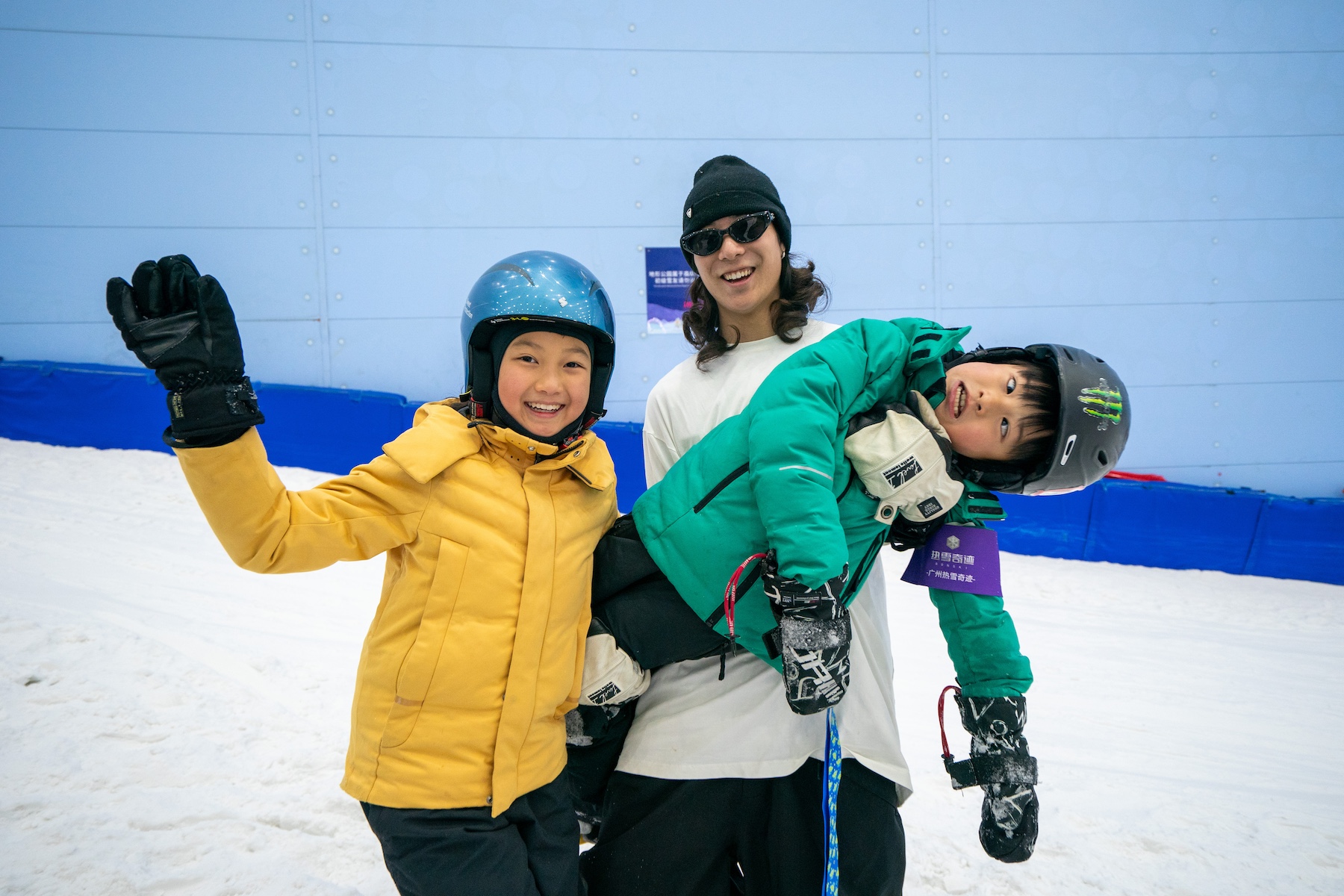
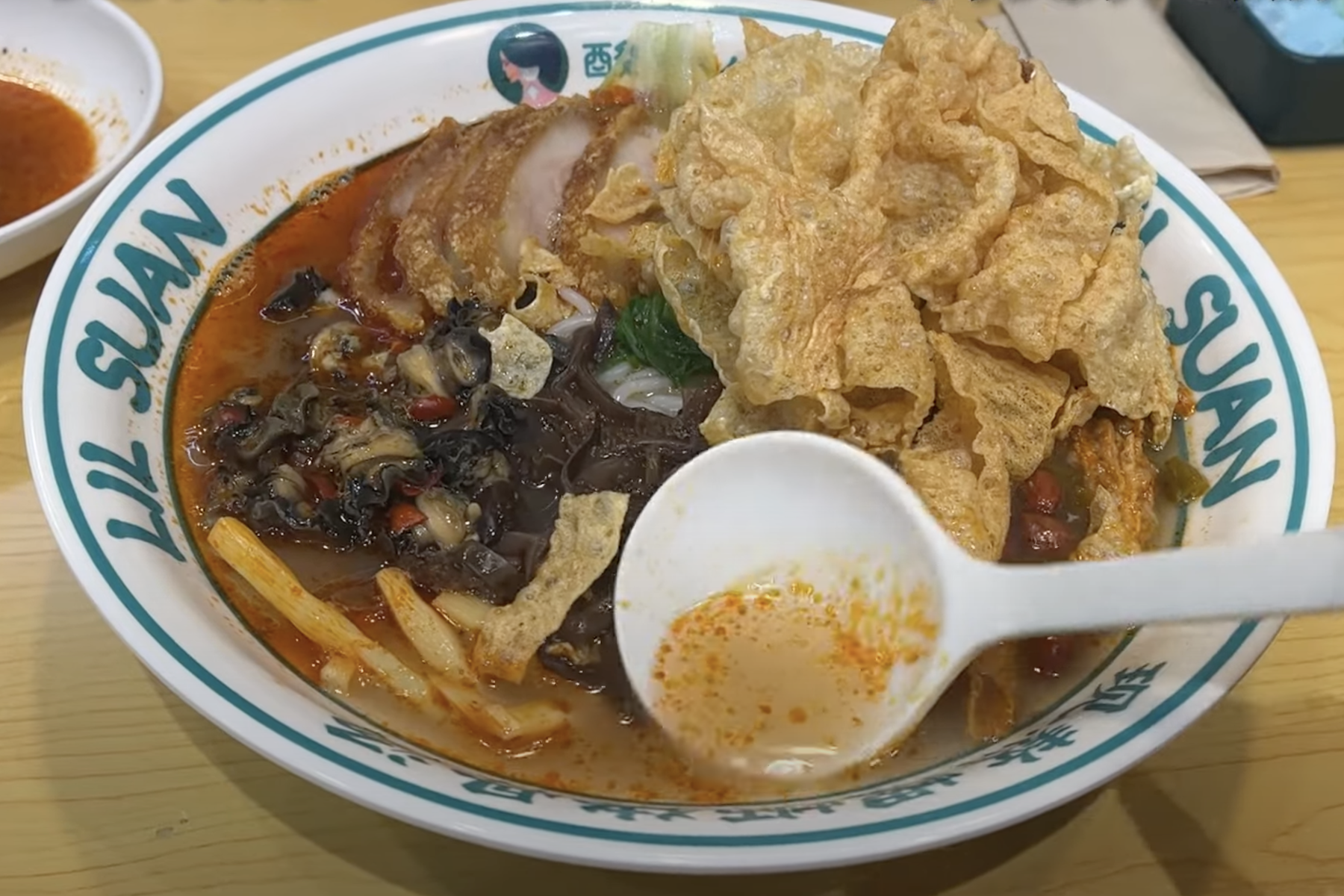
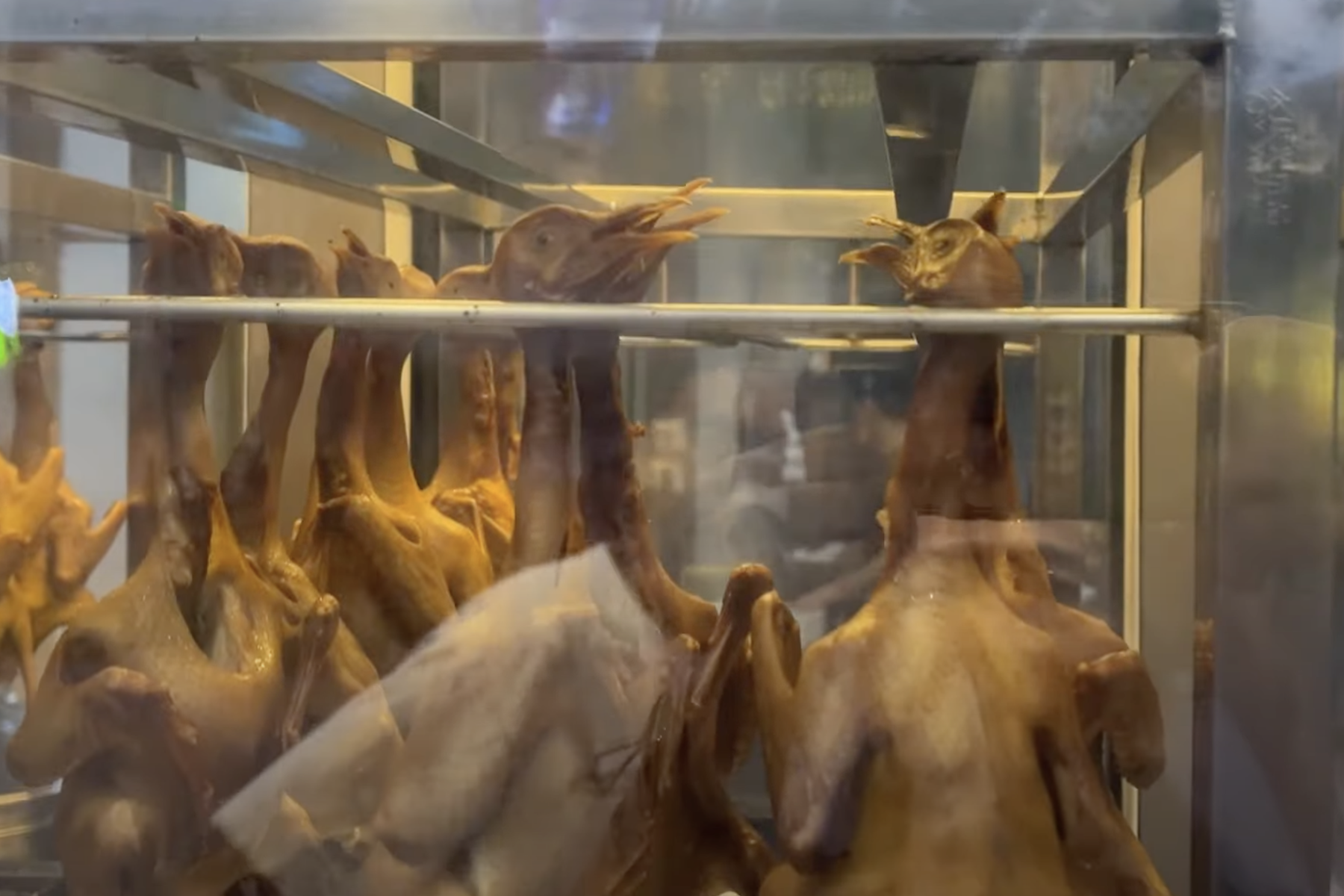
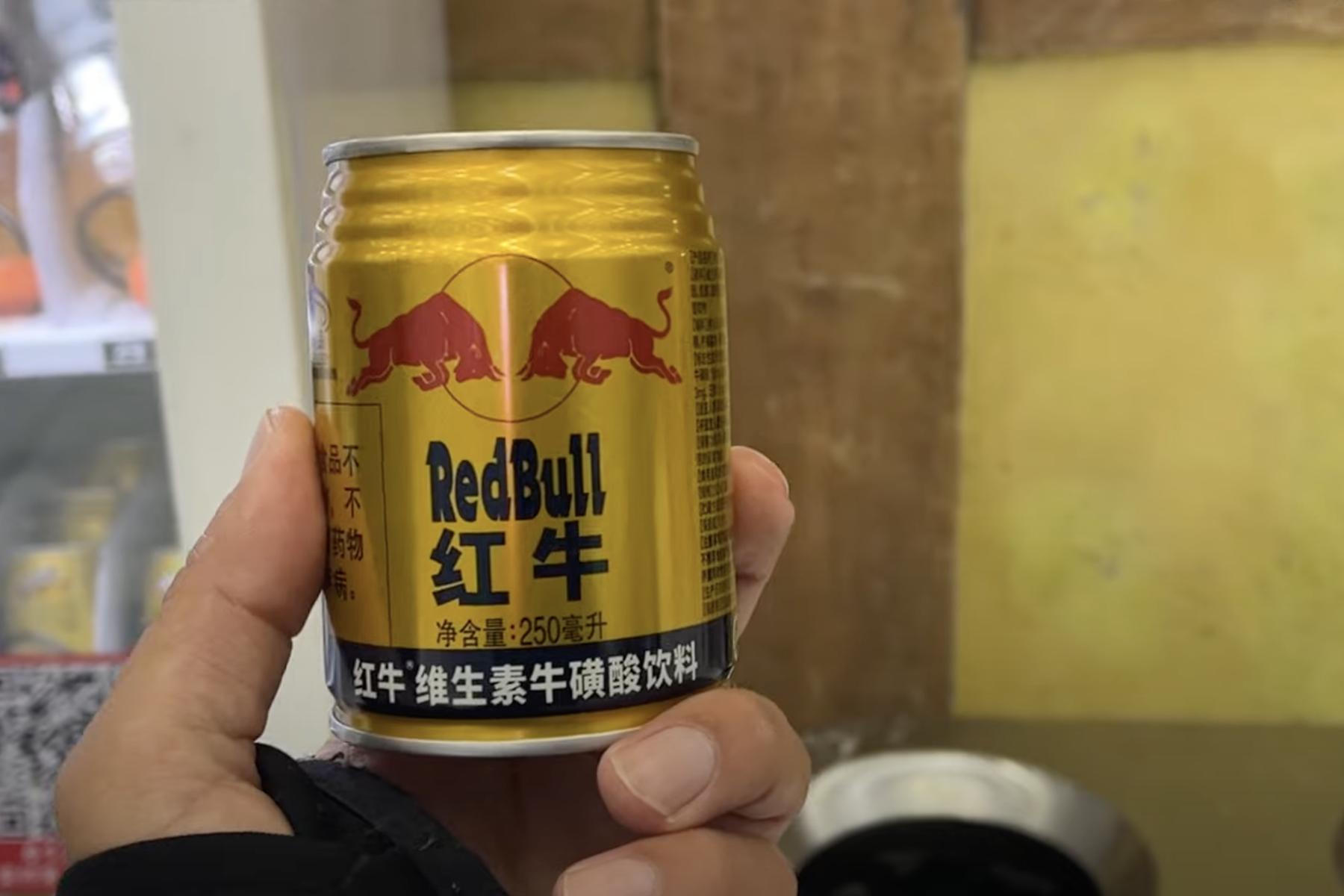
The freeskiing scene over there is still in its infancy, but people who like it seem to be using VPNs to watch YouTube. So Henrik Harlow is very popular over there. Everyone is wearing baggy clothes. And what was interesting was that my lesson videos seemed to be circulating a lot over there, so there were a lot of skiers who knew about me (lol).
In addition to outdoor ski resorts, indoor ski resorts are also popular in China, but it seems that many people come to Japan if they want to ski on natural snow. As the sport gets more popular, it is expected that more Chinese skaters will come to Japan.
Freeskiing is very well known in China due to the influence of Irene Gu. There are still a lot of beginners, so when you're skating in the park or trying out grator tricks, you can feel the passionate stares from other customers. People over there like flashy things, so I feel like freeskiing will be more popular. I also hope that through skiing, I can create more friendships that transcend borders.
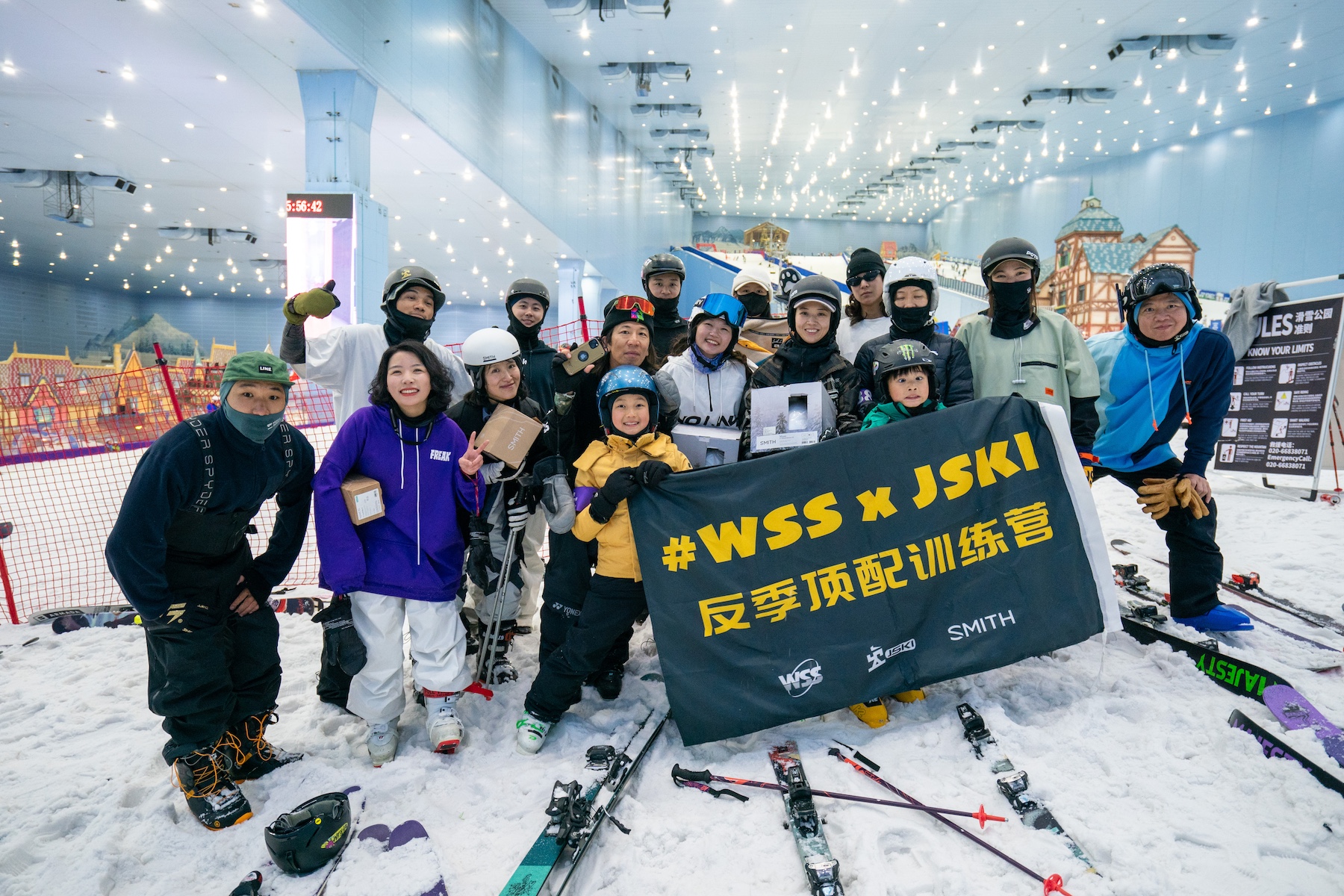
The journey is also available on YouTube. If you want to know more about skiing in China, check out our YouTube channel!
Photo = Simon Fujita, JSKI

